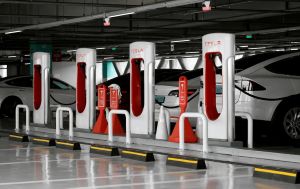


Level 3 DC Fast Charger: Powering the Next Era of Rapid Electric Vehicle Charging
Level 3 DC Fast Charging: Powering the Future of Electric Vehicles
LiCB Charge, a leading EV charger manufacturer in China, offers reliable AC and DC electric vehicle charging stations along with comprehensive charging solutions.
The electric vehicle (EV) revolution is well underway, and with it comes the need for faster, more efficient charging options. While Level 1 and Level 2 chargers are common for home and workplace use, Level 3 DC fast chargers are revolutionizing how EVs are charged on the go, enabling rapid refueling and supporting long-distance travel and commercial fleets.
Unlike Level 2 chargers, which supply alternating current (AC) to the vehicle’s onboard converter, Level 3 DC fast chargers deliver direct current (DC) directly to the battery. This allows much higher power delivery—ranging from 30 kW up to 350 kW or more—and can charge an EV from nearly empty to 80% in as little as 15 to 60 minutes.
Level 3 chargers, often called rapid chargers or superchargers, solve one of the biggest hurdles for EV adoption: charging time. Fast, convenient charging similar to a short break makes EVs practical for road trips, daily commuting, and commercial use.
Power Output: 30 kW to 350 kW+
Charge Time: 15–60 minutes to 80% battery
Range Added: Approximately 60 to 200 miles in 20 minutes
Typical Locations: Highway rest stops, gas stations, shopping centers, urban hubs, and fleet depots
In contrast, Level 2 chargers provide around 7 to 22 kW and require several hours for a full charge.
Level 3 chargers convert AC from the grid to DC inside the charger itself, then deliver it directly to the EV battery. They communicate with the vehicle’s battery management system to adjust voltage and current, ensuring safe, efficient charging while protecting battery health.
Charging speed depends on:
Charger output capacity
Vehicle’s maximum charge acceptance
Battery temperature and current state of charge
Environmental conditions
For example, even a 350 kW charger won’t exceed the vehicle’s accepted rate—say 150 kW—ensuring compatibility and safety.
Because of the high cost and infrastructure requirements, Level 3 chargers are mostly installed in public or commercial spaces such as:
Highway service areas
Gas stations transitioning to EV fueling
Shopping mall parking lots
Urban fast-charging hubs
Fleet depots for taxis, delivery vehicles, and rideshare fleets
These locations support long-distance travel and high-usage commercial operations, alleviating range anxiety.
Investing in fast charging infrastructure offers multiple advantages for businesses:
Boost Fleet Efficiency: Faster charging means less downtime, improving productivity for delivery and ride-hailing services.
Attract Customers: Retailers and service providers can increase foot traffic by offering convenient fast charging.
Support Sustainability Goals: Installing DC chargers showcases a commitment to reducing emissions, enhancing corporate social responsibility.
Future-Proof Operations: High-power chargers accommodate advancing EV battery technology, minimizing future upgrade costs.
Deploying Level 3 fast chargers requires:
Significant upfront investment (equipment, installation, electrical upgrades)
Managing increased grid demand and possible utility charges
Planning for space, vehicle queuing, and accessibility
Fortunately, many government incentives help offset these costs.
Fast charging technology continues to advance:
Ultra-fast chargers exceeding 400 kW are being tested, cutting charge times to under 10 minutes.
Vehicle-to-grid (V2G) tech enables EVs to return power to the grid, supporting energy management.
Smart charging networks optimize usage and integrate renewable energy.
Industry standards like CCS and CHAdeMO improve charger compatibility worldwide.
Level 3 DC fast chargers are essential for accelerating EV adoption by making charging faster, more accessible, and convenient. For businesses, cities, and fleet operators, investing in these chargers is both a smart economic move and a crucial step toward a sustainable future. With proper planning and support, fast charging networks will power the transition to cleaner transportation for years to come.Know more about Google SEO Directory
